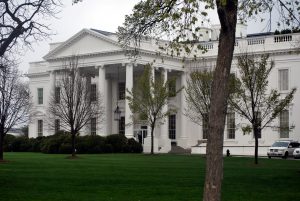
Authors: Luis Blanquez and Steven Cernak
Strong winds of change keep blowing in the antitrust world. In the past weeks we’ve witnessed two new major developments in the U.S.: (i) President Biden’s Executive Order to increase antitrust enforcement, and (ii) six antitrust bills issued by the House Judiciary Committee. That’s a lot to summarize in one article, so we’ve decided to just unwrap them below for you to decide how deep you want to keep digging.
-
President’s Biden Executive Order on Promoting Competition in the American Economy
This month President Biden issued the Executive Order on Promoting Competition in the American Economy (the “Order”). The Order aims to reduce the trend of corporate consolidation, drive down prices for consumers, increase wages for workers and facilitate innovation. It establishes a Whole-of-Government effort to promote competition in the American economy by including 72 initiatives to enforce existing antitrust laws and other laws that may impact competition to combat what it sees as excessive concentration of industry and abuses of market power, as well as to address challenges posed by new industries and technologies.
The Fact Sheet further explains how the Order (i) encourages the leading antitrust agencies to focus enforcement efforts on problems in key markets and (ii) coordinates other agencies’ ongoing response to corporate consolidation.
Calling the DOJ and FTC to enforce the antitrust laws vigorously
The Order calls on the federal antitrust agencies, the Department of Justice (DOJ) and Federal Trade Commission (FTC), to enforce the antitrust laws vigorously. The Order acknowledges the overlapping jurisdiction of both agencies and encourages them to cooperate fully, both with each other and with other departments and agencies, in the exercise of their oversight authority.
In particular, the Order encourages the Chair of the FTC to exercise the FTC’s statutory rulemaking authority in areas such as (i) unfair data collection and surveillance practices that may damage competition, consumer autonomy, and consumer privacy, (ii) unfair anticompetitive restrictions on third-party repair or self-repair of items, such as the restrictions imposed by powerful manufacturers that prevent farmers from repairing their own equipment; (iii) unfair anticompetitive conduct or agreements in the prescription drug industries, such as agreements to delay the market entry of generic drugs or biosimilar; (iv) unfair competition in major Internet marketplaces; (v) unfair occupational licensing restrictions; (vi) unfair tying practices or exclusionary practices in the brokerage or listing of real estate; and (vii) any other unfair industry-specific practices that substantially inhibit competition.
Also, the Order specifically addresses merger review by (i) encouraging antitrust agencies to revisit and update the Merger Guidelines (both horizonal and vertical) and (ii) challenge bad mergers previously cleared by past Administrations. Immediately after the publication of the Order, FTC and DOJ also issued a joint statement highlighting the fact that the current guidelines deserve a hard look to determine whether they are overly permissive, and how they will jointly launch a review of the merger guidelines with the goal of updating them to reflect a rigorous analytical approach consistent with applicable law.
In parallel, FTC has also passed this month some new resolutions updating its rulemaking procedures to set stage for stronger deterrence of corporate misconduct, and authorizing investigations into key law enforcement priorities for the next decade. As FTC’s chair Lina M. Khan stressed in a recent statement, priority targets include repeat offenders; technology companies and digital platforms; and healthcare businesses such as pharmaceutical companies, pharmacy benefits managers, and hospitals. Last but not least, FTC recently voted to rescind a 1995 policy statement that made it more difficult and burdensome to deter problematic mergers and acquisitions. The 1995 Policy Statement on Prior Approval and Prior Notice Provisions made it less likely that the Commission would require parties that proposed mergers that the Commission had determined would be anticompetitive to obtain prior approval and give prior notice for future transactions. By rescinding this policy statement, the FTC will be more likely to obtain prior notice of future transactions by those parties even beyond HSR notice requirements.
Grab your popcorn. Following President Joe Biden’s recent nomination of Jonathan Kanter as the new AAG for U.S. Department of Justice Antitrust Division, it is likely we will see some important antitrust enforcement action from both agencies very soon aimed at corporate concentration, especially the big tech sector.
New White House Competition Council
The Order establishes a new White House Competition Council, led by the Director of the National Economic Council, to monitor progress on finalizing the initiatives in the Order and to coordinate the federal government’s response to what it sees as the rising power of large corporations in the economy.
The Council will meet on a semi-annual basis––unless the Chair determines that a meeting is unnecessary––and will work across agencies to provide a coordinated response to overconcentration, monopolization, and unfair competition. The FTC and other independent agencies are welcome and expected to participate in this process.
Granted patents and the protection of standard setting processes
To avoid the potential for anticompetitive extension of market power beyond the scope of granted patents, and to protect standard-setting processes from abuse, the Order encourages the Attorney General and the Secretary of Commerce to consider whether to revise their position on the intersection of the intellectual property and antitrust laws, including by considering whether to revise the Policy Statement on Remedies for Standards-Essential Patents Subject to Voluntary F/RAND Commitments issued jointly by the Department of Justice, the United States Patent and Trademark Office, and the National Institute of Standards and Technology on December 19, 2019.
Specific Industry Sectors addressed in the Order
Labor Markets
The Order encourages the FTC to: (i) ban or limit non-compete agreements, (ii) ban unnecessary occupational licensing restrictions that impede economic mobility, and (iii) along with DOJ, strengthen antitrust guidance to prevent employers from collaborating to suppress wages or reduce benefits by sharing wage and benefit information with one another.
The Order directs the Treasury Department to submit a report on the impact of what it sees as the current lack of competition on labor markets within 180 days and encourages the FTC and DOJ to revise the Antitrust Guidance for HR Professionals.
Healthcare
The Order (i) directs the Food and Drug Administration (FDA) to work with states and tribes to safely import prescription drugs from Canada, pursuant to the Medicare Modernization Act of 2003; (ii) directs the Health and Human Services Administration (HHS) to increase support for generic and biosimilar drugs, which can provide low-cost options for patients; (iii) directs HHS to issue a comprehensive plan within 45 days to combat high prescription drug prices and price gouging, (iv) encourages the FTC to ban “pay for delay” and similar agreements by rule; (v) encourages HHS to consider issuing proposed rules within 120 days for allowing hearing aids to be sold over the counter, (vi) underscores that hospital mergers can be harmful to patients and encourages the DOJ and FTC to review and revise their merger guidelines to ensure patients are not harmed by such mergers; (vii) and directs HHS to support existing hospital price transparency rules and to finish implementing bipartisan federal legislation to address surprise hospital billing.
Transportation
The Order directs the Department of Transportation (DOT) to consider (i) issuing clear rules requiring the refund of fees when baggage is delayed or when service isn’t actually provided—like when the plane’s WiFi or in-flight entertainment system is broken and (ii) issuing rules that require baggage, change, and cancellation fees to be clearly disclosed to the customer.
The Order further encourages (i) the Surface Transportation Board to require railroad track owners to provide rights of way to passenger rail and to strengthen their obligations to treat other freight companies fairly, and (ii) the Federal Maritime Commission to ensure vigorous enforcement against shippers charging American exporters exorbitant charges.
Agriculture
The Order expresses a concern on market concentration and helps ensure that the intellectual property system, while incentivizing innovation, does not also unnecessarily reduce competition in seed and other input markets beyond that reasonably contemplated by other laws.
In particular the Order directs the U.S. Department of Education (USDA) to consider issuing (i) new rules under the Packers and Stockyards Act making it easier for farmers to bring and win claims, stopping chicken processors from exploiting and underpaying chicken farmers, and adopting anti-retaliation protections for farmers who speak out about bad practices; (ii) new rules defining when meat can bear “Product of USA” labels, so that consumers have accurate, transparent labels that enable them to choose products made here; and (iii) a plan to increase opportunities for farmers to access markets and receive a fair return, including supporting alternative food distribution systems like farmers’ markets and developing standards and labels so that consumers can choose to buy products that treat farmers fairly.
Continue reading →

 The Antitrust Attorney Blog
The Antitrust Attorney Blog











